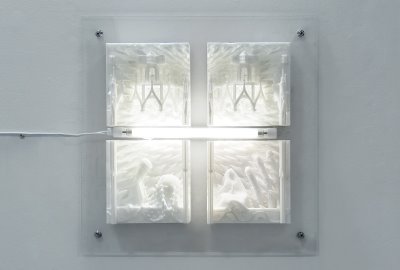![There is a factory hidden amongst us [Source: Fabbaloo]](https://fabbaloo.com/wp-content/uploads/2020/05/image-asset_img_5eb067ef90814.jpg)
There is a factory hidden amongst us [Source: Fabbaloo]
I’ve been doing some thinking about how the 3D print community has been addressing the COVID-19 crisis.
The crisis has provoked action from many in the community: skills and resources were redirected from their normal purpose to be put towards “something” to help with the crisis. This “something” varied considerably as volunteers searched for something productive to do.
Some worked directly with medical authorities to develop workable solutions. Others simply designed things they believed to be useful, and sometimes they were not. There was a gap in knowledge required to develop properly functioning medical devices, and that’s why it’s so important to work with medical authorities.
We’ve learned a lot from the work undertaken so far, as I listed last week. One of the main realizations that will come from the crisis is that 3D printing can actually be a manufacturing option. Sure, us insiders all know this, but my thought is that the general public will now realize this, too.
Manufacturing Vs 3D Printing
Let’s discuss this manufacturing capability a bit more.
What’s been realized is that large-format 3D printers, or large arrays of many 3D printers, do have the capability of producing huge quantities of objects in a very short time. Some of those groups of 3D printers are in a single factory, while others are distributed across the globe.
Many of these machines had been used for prototyping or low-volume production, but when the chips were down, many were almost instantly repurposed to produce medical gear. Typically this has been face shields, as a standard 3D printer is not really capable of producing anything much more complex due to material, functional and safety requirements.
But as far as producing high volumes in a mass production scenario, this type of machine can’t beat traditional manufacturing in the long run, even when many 3D printers are involved.
However, there is still a place for this activity.
Fitting 3D Printing Into The Manufacturing Curve
The advantage of 3D printing over traditional manufacturing has to do with setup time. A full-scale mass production line takes a while to design, build and launch. Once done it can produce zillions of units, but it takes a while to get there.
This provides a bit of an opening for 3D printers, as they have almost no setup time at all. Many 3D printers can, if provided with a proper 3D model and some appropriate material, produce units almost immediately, sometimes even the same day.
Traditional manufacturers can eventually pump out heavy volumes of products, as many as needed. However, it takes time for them to get set up to do so. Thus, when an immediate need arises there is a bit of a time gap where insufficient product is available, as seen here:
![There is a delay to get to full production, leaving a shortage [Source: Fabbaloo]](https://fabbaloo.com/wp-content/uploads/2020/05/image-asset_img_5eb067efae66a.jpg)
There is a delay to get to full production, leaving a shortage [Source: Fabbaloo]
That’s where 3D printing and similar rapid prototyping technologies could fit in when needed. If so, it might look like this:
![3D printing could fill part of the manufacturing gap, if coordinated [Source: Fabbaloo]](https://fabbaloo.com/wp-content/uploads/2020/05/image-asset_img_5eb067efd2649.jpg)
3D printing could fill part of the manufacturing gap, if coordinated [Source: Fabbaloo]
Lower volumes could be produced in short order by nontraditional manufacturing entities, but eventually they would be overtaken by traditional manufacturers.
The Hidden Factory
The mass of all these 3D printers is considerable when you consider the worldwide deployment of the machines. There are certainly many hundreds of thousands of devices installed and working today, many of which are capable of producing useful parts.
For example, if a part takes 1 hour to produce and there are 100,000 devices participating, you can theoretically make 17M units per week. That’s a hefty amount.
In a way, these distributed machines are like a kind of “hidden factory” that’s under our noses. We don’t even notice it’s there.
But it could be extremely powerful.
However, these machines can only be that hidden factory if properly coordinated. This requires awareness of need, availability of appropriate 3D models, access to proper materials and a suitable method of collecting and distributing the parts produced.
While the 3D printers and eager operators exist, the coordination largely does not. That said, there are multiple groups attempting to coordinate things, but the fact that there are multiple entities simply means it’s not coordinated overall, and thus we’ve lost manufacturing capacity.
Coordinating 3D Printers In The Future
There’s no time for this now, but in the future I would like to see a proper effort to coordinate this under-used resource for situations just like this.
It could be developed under official entity, perhaps a notable government or even the UN. The problem is that these machines are literally distributed around the entire planet and to fully exploit them in emergencies requires a global level of coordination. We just don’t have that right now.
But we could.
And at some future moment it would be a much more straightforward matter to “push the button” that activates the hidden factory and very quickly resolves an emergency need.

